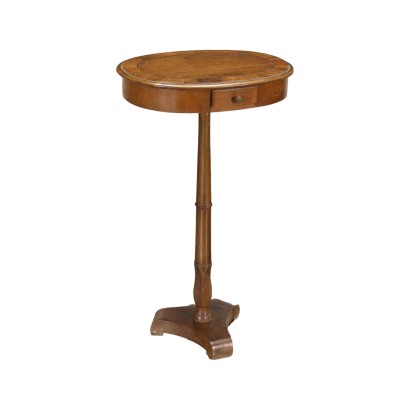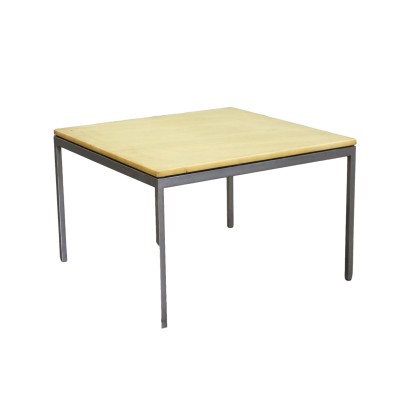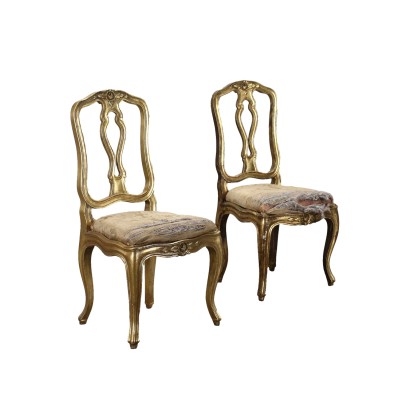Gueridon Walnut Beech - Italy XX Century
Features
Style: Riproduzione in Stile
Age: 20th Century / 1901 - 2000
Origin: Italy
Description
Gueridon in style supported by a central carved baluster, has a drawer in the undertop band. In beech, the top is veneered in walnut.
Product Condition:
Product that due to age and wear requires restoration and resumption of polishing.
Dimensions (cm):
Height: 80
Width: 46,5
Depth: 36
Additional Information
Style: Riproduzione in Stile
Age: 20th Century / 1901 - 2000
20th Century / 1901 - 2000Main essence:
Beech
It is a semi-hard wood which, unfortunately, is easily wormed, therefore it is considered poor. Due to its light but variegated shades, from blond to reddish, it was nevertheless appreciated by French cabinetmakers. It was mainly used for furniture structures or, as an alternative to walnut, by provincial English furniture makers for popular works, mostly in the 1700s. The noblest use is due to Thonèt, who applied the steam bending of the beech in the making of the furniture, in particular for the chairs that took his name.Walnut
Walnut wood comes from the plant whose botanical name is juglans regia , probably originally from the East but very common in Europe. Light or dark brown in color, it is a hard wood with a beautiful grain, widely used in antique furniture. It was the main essence in Italy throughout the Renaissance and later had a good diffusion in Europe, especially in England, until the advent of mahogany. It was used for solid wood furniture and sometimes carvings and inlays, its only big limitation is that it suffers a lot from woodworm. In France it was widely used more than anything else in the provinces. In the second half of the eighteenth century its use decreased significantly because mahogany and other exotic woods were preferred. Alternative proposals
It could also interest you
























